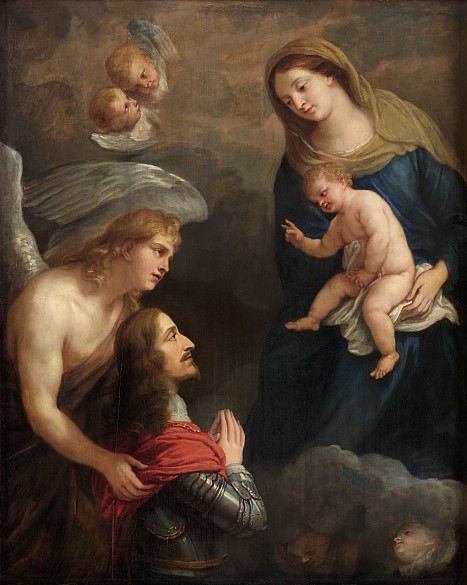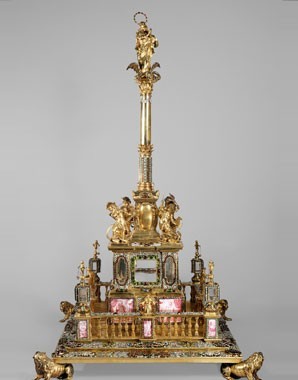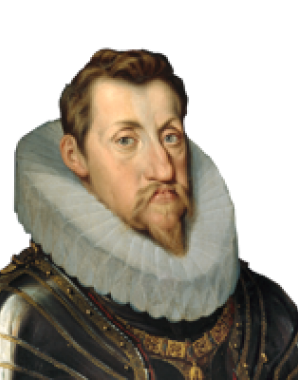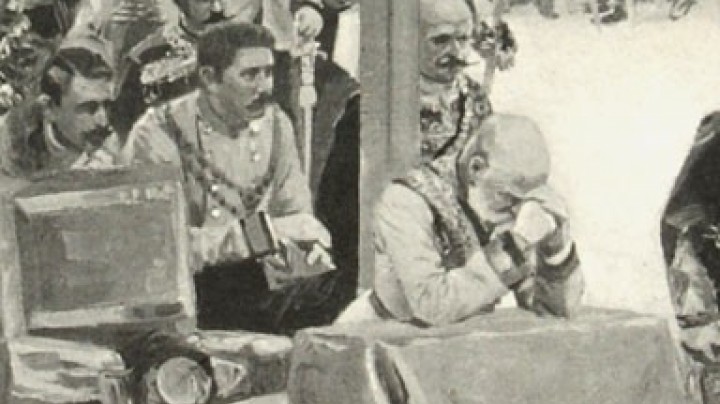Pious religious zeal as a sovereign virtue
Ferdinand II was recorded as saying he would rather rule over a desert than over a land full of heretics. The protection and fostering of the ‘true religion’ – and from the Habsburg point of view that was always the Catholic religion – were seen by the Habsburgs as one of their foremost duties as rulers.
Lady Mary Wortley Montagu in 1716, on the religious zeal of Empress Eleonora, widow of Leopold I, relates.Zitiert nach Breunlich, Maria (Hg.): Lady Mary Montagu. Briefe aus Wien, Wien 1985, S.36I had an audience next day of the empress mother, a princess of great virtue and goodness, but who picques herself too much on a violent devotion. She is perpetually performing extraordinary acts of penance, without having ever done any thing to deserve them.
Johann Ulrich von Eggenberg, the closest adviser and confidant of Emperor Ferdinand II, on his sovereign lord. Zitiert nach: Sturmberger, Hans: Kaiser Ferdinand II. und das Problem des Absolutismus, in: Land ob der Enns. Aufsätze und Vorträge, Linz 1979, S.161His conscience is tender, and on Judgement Day the Emperor desires to bring a pure and immaculate soul to the throne of God the Almighty.
The Habsburgs derived their right to unlimited dominion from religion; as emperors of the Holy Roman Empire they were firmly convinced of a divine mission in exercising the highest secular office in Christendom. The divine right of kings was firmly anchored in the idea of Empire. In the House of Habsburg this was multiplied so to speak by the wearing of two additional ‘holy crowns’, the Bohemian Crown of St Wenceslas and the Hungarian Crown of St Stephen. This gave enormously increased authority in an age when the world of ideas was grounded in religion.
The quasi-sacred aura surrounding imperial majesty was reinforced in the rituals of the Catholic Church. All important state and dynastic events were accompanied and framed by thanksgiving services, penitential processions, public devotions and high masses. Religious feasts at the court of the devoutly Catholic Habsburgs were always celebrated with exceptional reverence and elaborate ceremony.
The imperial ethos of the Habsburgs, underpinned by religion, was in fact seen as the conscious antithesis to the French kingship of Louis XIV with its flaunting of secular pomp.
We have an ideal example of the Habsburg view of divinely ordained order in the Plague Column in Vienna, an endowment of Leopold I. The monument is crowned by a gilded sculpture of the Trinity. The massive base stands for the earthly power of the House of Habsburg, signified by the coats of arms of the Crown Lands. What strikes the eye is the portrayal of the emperor, who is humbly kneeling as a petitioner for the subjects under his protection. Acting as mediators between these two poles are the patron saints of the Austrian Lands and dynastic saints grouped on a pyramidal cloud.
Nevertheless, this public demonstration of fear of God was not just an empty ritual for many Habsburgs, but an inner need: above all Ferdinand II and Leopold I left many proofs of an intense personal piety which at times escalated into bigotry. Hearing three Masses a day or praying many hours, even days, for the well-being of the country in times of crisis was part of Court life.
The religious aspect was particularly strong in the everyday life of the women in the House of Habsburg. Active religious commitment was a component of the contemporary ideal of womanhood. Here women could develop initiatives, act as models or charitable counterpart to the severity of the sovereign. This catalogue of virtues was applied even more strictly to Habsburg widows, who were expected to withdraw completely from worldly pleasures.




















